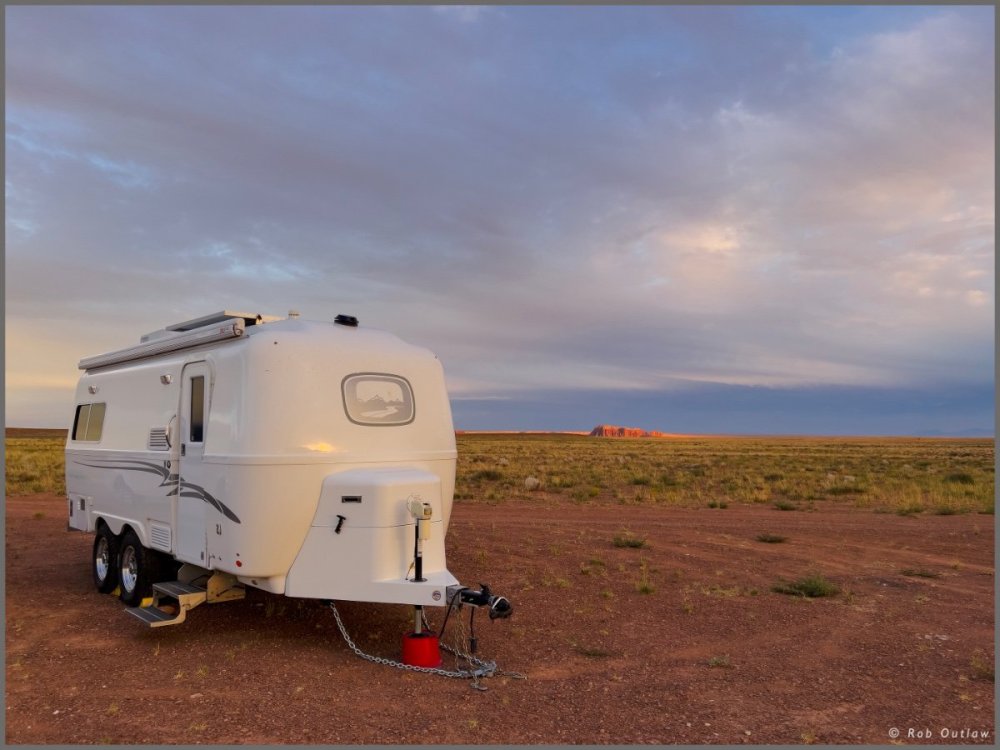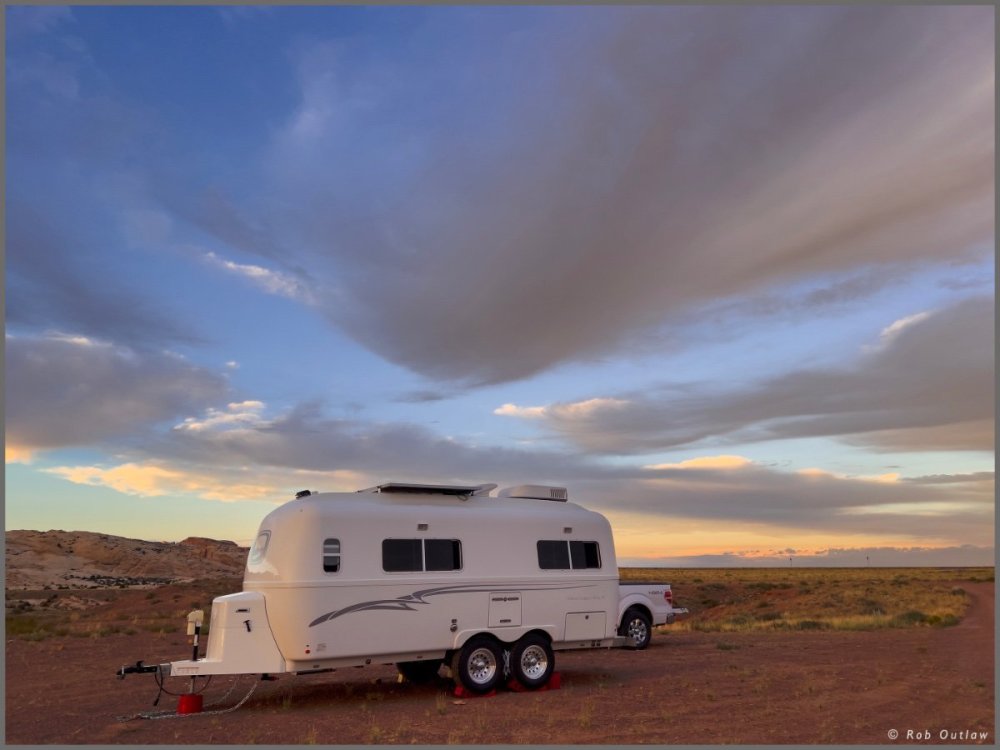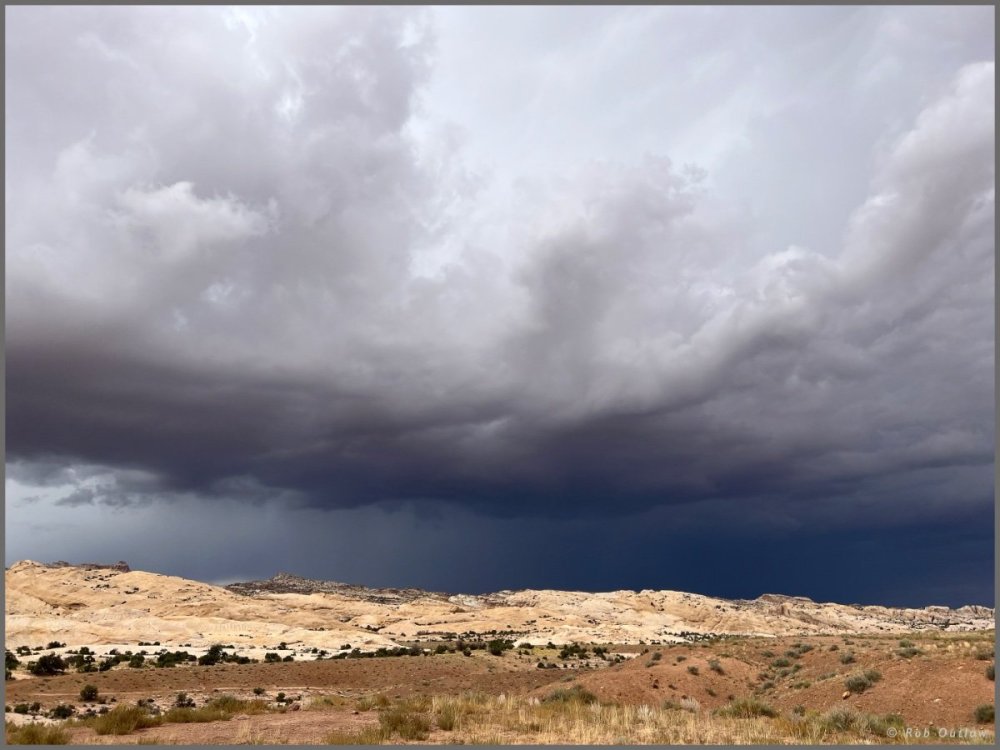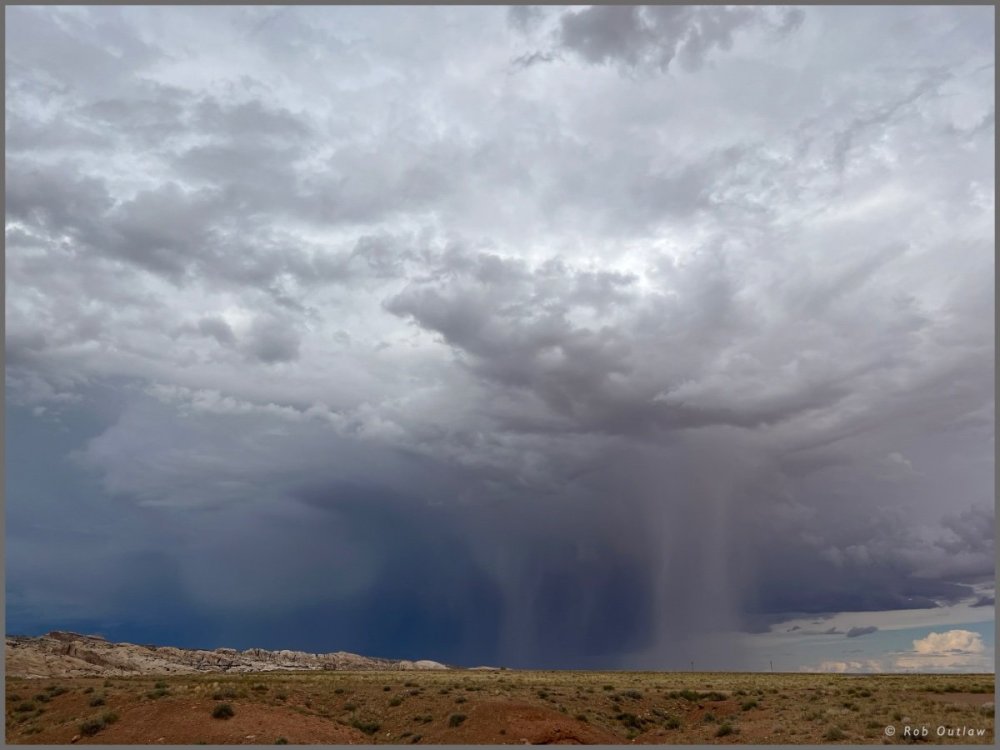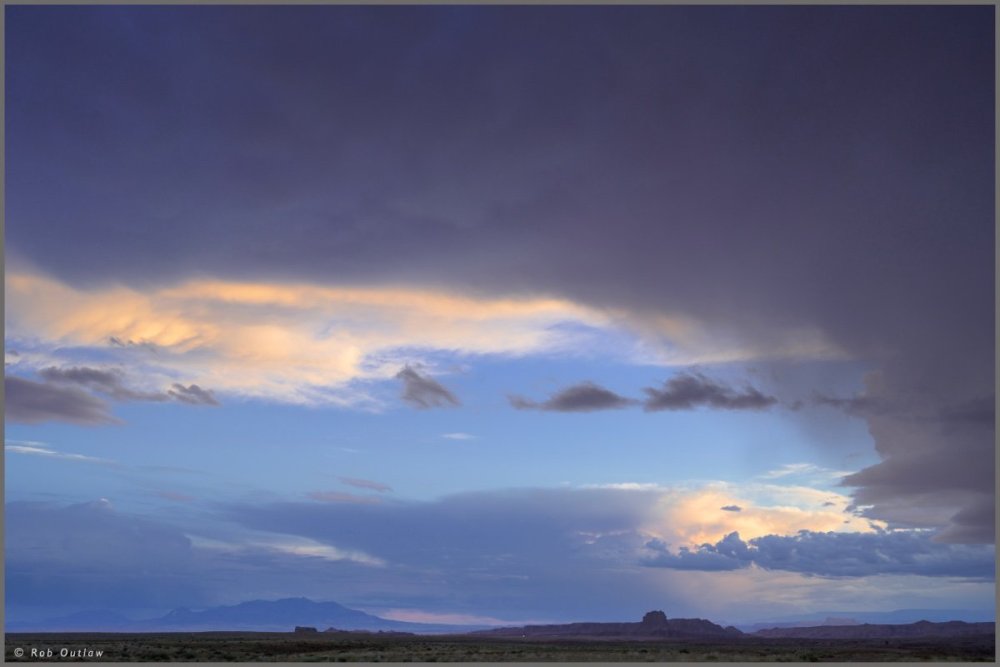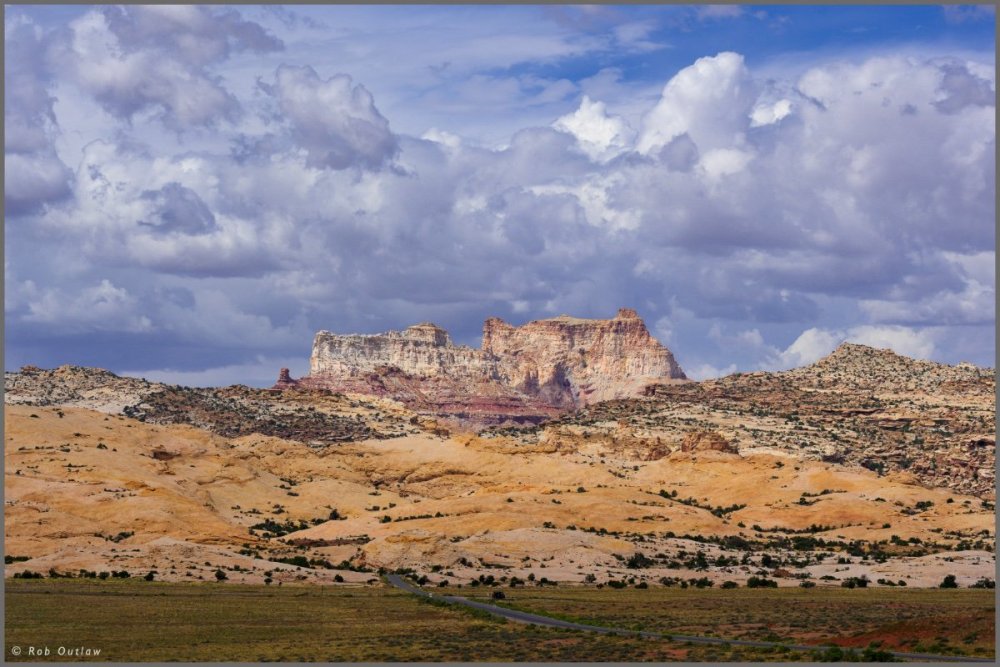-
Posts
764 -
Joined
-
Last visited
-
Days Won
17
Everything posted by routlaw
-
Roads were a mixed bag from Interstate to backcountry gravel roads none were terrible though and nothing compared to the road up to Green River Lakes in the Wind River Range. Fresh water was nearly full most of the recent trip.
-
https://www.roboutlawphotography.com/oliver#1 Hey folks thanks for all the help and interest, try clicking on the link above which should provide two thumbnails you can use either your cursor keys or click on each image to view the next. Anyway this should give you a better idea of my cracked frame, it's not terrible at this point but bad enough.
-
Thanks appreciate the heads up.
-
Anyone ever run into something like this, photos below? Just returned from a trip to the SW and noticed this crossbeam at the rear of trailer broke loose from its weld joint. Thinking about bolting it back on instead of finding someone who can do aluminum welding. What do you guys think? Thanks
-
Good one 😂 must have been part of my Alabama genetic code.
-
This reminds me of trip, might have been our Oliver pick up trip, driving through Texas on the return. Gassed up in Lubbock where it was calm and quite warm but by the time we were on the north end of the city wind picked up noticeably and continued to get much worse. We knew 70-90 mph winds were supposed to be in west TX that day and sure enough it happened. Made it to Palo Duro State Park just outside of Amarillo, pitch dark and temps had gone from mid 80's in Lubbock to 40 ± degrees at Palo Duro and all I had on was a t-shirt, shorts and sandals freezing to death trying to get the gate unlocked in the dark, then setting up the Ollie. There might have been half a dozen locks on the gate chain. The amazing part was the second I shut the door as we were getting settled in you could hear a pin drop. Trudi and looked at each other WTH, howling wind outside but quiet as a church mouse inside. Opened the door again, sure enough still howling wind.
-
Another reason for Oliver to change their suspension system maybe? Just saying.
-
Hadn't thought about that passageway, but that clears up a lot. Not sure how much of the return air would hit the outside shower pipes though, maybe some.
-
Thanks that was one of the companies I had found while searching for this product. Knew about the pipe wrap though. All good info.
-
While looking around the internet for this material I came across a number of RV Van modification companies that use this stuff extensively and also sell it on the open market. It is used mostly for sound insulation more than thermal insulation though. Apparently the R value of the thinsulite is 5.2 better than nothing and pretty good for something this thin. Yep, seen the pipe wrap by the box load in the home centers and hardware stores.
-
A couple more thoughts on this. Good thread though. To my way of thinking there is yet another mod to do if you decide to install a vent under the seat cavities. There is a barrier made from 1/4 inch plastic just behind the furnace and hot water heater that would eliminate any air flowing back through the basement as a fresh air return. This sheet is sort of a janky affair that is most likely meant to protect the furnace and hot water heater should stored items go flying around in the rear compartment under the bed. I suppose one could devise a heavy duty net that might accomplish the same thing but otherwise a vent hole needs to be cut into this barrier sheet. No idea if this is installed with those people who have the Truma units. I have taken mine out a couple of times to service the hateful Suburban furnace and it is a PITA to get it out then back in.
-
Dave I am certainly no expert at these things and honestly haven't given it much thought until you brought this up but everything you state above makes total sense. Have always thought the heating system in the EII was sub par especially noticeable when really cold but it seems like you have worked through this and improved the situation considerably. This is going to be my next mod for sure once it thaws out here in Montana and I can get our Ollie out of storage. Are these 4 inch vents commonly available? If not no big deal I can use something else in lieu of those. Is it possible to have too much return air venting thus lowering its efficiency? I also want to purchase some of the 3M insulation and pipe wrap @rich.dev mentioned too. My thoughts for now are one in the bath under the toilet paper roll, one below seats probably closest to the rear if there is room and another one close to the fridge at the entry. The existing one will get closed off completely. It's not a bad idea to have a vent for the closet if for no other reason to vent off heat during summer camp trips. That space if left closed can get pretty darn warm. Thanks
-
Dave I would encourage you to check out the virtual tour videos, linked here, to see their placement. However this still doesn't make sense to me because the inside of the closet is mostly sealed. I am at a loss as to why they wouldn't have put a 4" inch vent in the bath, then one under the seats of the EII, and a 3rd at the side of the fridge. Also if you look at each different video the placement of these vents all slightly differ from one to the other. Maybe someone with the newer EII's or Elites can update and inform us.
-
@rich.dev looks like you added some additional insulation of some type in addition to the pipe wrap. Don't ever recall running across black fabric faced insulation in the past. Just curious what is this stuff?
-
I am a bit confused by this placement in the closet area top and bottom. If the closet door is closed which I would assume it to be most of the time those return vents would not be able to draw much air if any. Seems like a curious and odd placement for them to me, but perhaps there is something I don't understand. Thanks
-
Finally had the time to watch the 2nd video, another really nice one chock full of great features, details and quality not seen on the NA campers. The mechanical rooms alone are mind boggling. Both campers seem flush with quality and nice design, IMHO. Regarding China, it is worth pointing out many items stamped with made in USA are really foreign made parts assembled in the US, more than most people might realize. There certainly is a lot of cheaply made items from there but I have also experienced some state of the art products made in China. Not here to carry water for China by any means but they are capable of very high quality products at least some of the time. I have seen some of their road building engineering that would blow anyones mind. Regardless thanks for sharing the vids very interesting campers.
-
Did the same thing too @SeaDawg thats a heck of a lot of trailer, camper for 90K. That much solar and LI-i0n batteries really stands out as a bargain.
-
Watched all of the first one, awesome. I wonder how much these things cost? You are so right and have known for years the Aussies put NA to shame on the RV industry which on the whole is a bit of a cruel joke. The windows and suspension on this rig is incredible and up to the task for the rugged Australian outback. I would own one in a heartbeat and never look back. Love the all AC power situation to. We have induction range in our house and love it, wouldn't go back to gas for any reason. The exteriors are not the coolest looking thing but otherwise hands down better engineering and design.
-
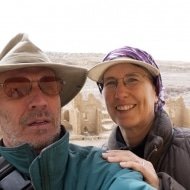
Tire pressure confusion - Legacy Elite 2 POLL
routlaw replied to John E Davies's topic in Towing an Oliver
Lots of good ideas and thoughts on this. Thanks. Just for conversation I will be a devils advocate "lightly" regarding tire inflation for both the TV and Ollie. But allow me to digress for a brief moment. Awhile back on an automotive forum, doesn't really matter which one but might have been a Tundra forum, there was a somewhat heated discussion regarding a gentleman who had gone from standard P rated tires to LT tires on his truck and asked what PSI should they be run. Sensible question but one fellow ripped the guy up on side and down the other claiming he should be running his tires full bore tilt at 80 PSI or risk a blowout and kill everybody on the highway. The answer struck me as a bit extreme given the research I had done on the subject to this point. Effectively it is true running tires at 80 PSI will reduce less heat build up due to less flexing and perhaps increasing gas mileage along the way, but is this the only safety factor of the equation to be considered? I have my doubts. What about braking, handling, maneuvering especially if in an emergency situation. At 80 PSI on lighter vehicles such as half ton trucks or Olivers there will not be enough tread on the road (the way the engineers and manufacturers designed the tire to operate). The tire chalk test bears this out too. Cutting to the chase, imagine having to swerve out of the way because some reckless driver runs a red light in front of you. Cornering and braking will not be optimum with over inflated tires and it compounds exponentially if towing a trailer. I'm certainly no expert on the subject but believe much depends on the individual vehicles and trailers and tires. What I can add from personal experience on a trip this past Sept from MT to southern UT with new LT tires. Ran my TV at 50 PSI and Oliver at 45 PSI. Truck being a tad bit heavier and loaded in the back with gear and tongue weight of trailer. Kept a close eye on heat and tire pressure build up with the TST TPMS and both did fine and this was driving through some 100º heat in SLC late afternoon. Thankfully no emergency maneuvering on the trip to test my theory. And for sure don't go up the gravel road to Green River Lakes in the Wind River Range with 80 PSI on either of your rigs. 🤣 -
Forgot to include a link, for anyone who would like to see more photographs from the areas below is a link to a hidden page on my website. Please feel free to visit. Figured I better not load up too many photos here. Thanks https://www.roboutlawphotography.com/new-adventures-in-utah#1
-
Returned from a trip to the Utah deserts and canyons a couple of weeks meeting up with an old hiking buddy. Spent most of the time around the San Rafael Reef or Swell as it is so often referred to. Not being a geologist not sure what the real difference is. Had some great hikes and adventures and experienced some fairly dramatic thunderstorms while down there. Sept is heading toward the end of the areas monsoon season and we did get to experience some of its beauty as well as drama. A good many of the Capitol Reef NP roads had been closed the day before we arrived there due to flash floods and then again more were closed the morning we left with park service declaring life threatening flash floods in some areas and washes. In my neck of the woods rain just means you might get a bit wet and uncomfortable but down there rain can kill you so we headed the warnings. Posting a few photos below, hope you can enjoy. Boondocked just outside the Reef at San Rafael looking west with evening storms Another view looking north with the Reef in the distance Yet another evenings storm moving over the San Rafael Reef, this one brought a deluge of rain. Another evening, another storm brings more rain. My camp spot provided a nice view of Goblin Valley State Park as well as the Blue Mountains in the distance. In the past when in this area we had always camped just inside the reef a mile or so in but I thoroughly enjoyed the sunsets and sunrises as well as the lighting drama from storms on this trip. Temple Mount seen from just outside the reef
-
Tire pressure, tire temps and TPM systems, a few more observations. This might not be the right place to post this so moderators please feel free to move it to another spot if it is inconsistent with the OP's @johnwen post on blowouts. Just returned a couple of weeks ago from a trip to the southwest mostly around San Rafael Reef and Capitol Reef National Park. Weather was all over the place during the tip down, while there and then on the return and thus it became an excellent opportunity to explore the results via the monitor on my new TST TPMS device. As stated above I only have 4 sensors and used them for my TV rather than the Oliver. Earlier in the year I replaced tires on both the TV (F150 Super Crew Cab) as well as the Oliver using Vredestein Pinza AT LT's. Honestly I have mixed emotions regarding putting them on my half ton truck, not because I don't like them but simply because once you start going down this path by default you are re-engineering the suspension system. As all of you know installing LT tires on a vehicle designed for PT tires, inflation rates can change dramatically. In this case tirepressure.com recommended going from the factory setting of 35 PSI all around to 50 PSI all around. Les Schwab stated emphatically to keep them at 35 PSI as the door jamb implies. While this conundrum has not been dealt with to my satisfaction, I decided to run 40 up front and 45 PSI in the rear for the recent trip. FWIW 50 PSI with 10 ply tires installed on a half ton truck with suspension set up for lighter weight 4 ply passenger tires is a brutal ride unless you are on the smoothest of roads. So how did things go? At no time did my tires overheat and pressure only increased by 5-7 PSI depending on a number of factors such as shade, sun exposure, type of driving and so on. Consistently tires facing the sunny side ran warmer and with about 2+ PSI more inflation after warm up, highway speeds tended to level things out while stop and go traffic oddly enough ran tire temps higher. Typically tire temps tended to hover between 8-14 degrees above the ambient outside temperature. At one point driving through stalled SLC traffic tires facing the sun rose to 114 degrees but it was also around 100 degrees outside and no telling what the pavement temps were. So with 40/45 PSI set front and rear respectively at mild temps pressure increased to 45/52 front and rear traveling down the road normally at 65 MPH with a few descents hitting 70 mph. How does one interpret all of this? It tends to fly in the face that one needs to inflate LT tires considerably higher than PT tires for the same vehicle. Clearly the load capacity of each LT tire is not being encountered with my F150, same for the Oliver which incidentally were all inflated to 45 PSI and which were only lightly warm to the touch each time they were checked. There are those who firmly believe in the chalk tire test for proper inflation of LT tires and while I have experimented with this it is not exactly scientific to my way of thinking. Regardless hope this info will be of some help to new comers and veterans alike while out on the road and towing their Olivers. Happy Trails
-
@johnwen Just purchased one of those myself earlier in the year. Thus far I have only four sensors and have been using those on my TV for now figuring it much better to monitor the tire pressure and temps with the tow vehicle. For this alone it has been quite the education looking at the results depending on driving conditions and ambient temperatures.
-
Couple more thoughts on this discussion. Several years ago while traveling to a photo shoot in SW Montana I had a blow out on my right front tire but was able to pull over safely and change the tire on the spot. Upon arriving at the next town stopped off at the local tire store and as it turns out on the trip over I had taken on a sharp rock that created a slow leak in the tire which as you all might guess built up some serious heat enough to cause the blow out. I suspect this is what might have happened to the OP in this thread. Fast forward to a couple of summers ago while camping up in the Seeley-Swan Lake area I noticed one morning what appeared to be a deflated right rear tire. Immediately went into Seeley Lake township for repairs at the local tire store. Turns out we were the third customer to come in with slow leaks that morning. Ours was the result of a nail but the mechanic had a jar full of culprits that had caused past customers the same issues. Looking at some of the culprits for flat tires was educational for sure with many of them being quite large such as bolts some bent others straight, various hardware pieces and so forth and so on. Items one would not normally think to be able to puncture a tire but there they were. Anyway glad the OP was able to correct this without undue harm to life and possessions. Blow outs can be scary stuff.
-
Have wondered and considered the same myself just too busy with other things to dive in. However it might be worth checking with Shock Surplus a mail order company that specializes in after market high performance shocks. There are most likely other mail order companies doing this but these guys seem to be informed.






